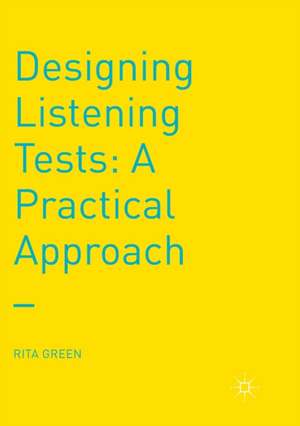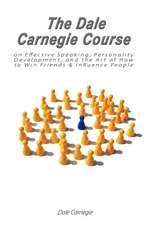Designing Listening Tests: A Practical Approach
Autor Rita Greenen Limba Engleză Paperback – 19 sep 2019
| Toate formatele și edițiile | Preț | Express |
|---|---|---|
| Paperback (1) | 212.24 lei 6-8 săpt. | |
| Palgrave Macmillan UK – 19 sep 2019 | 212.24 lei 6-8 săpt. | |
| Hardback (1) | 726.23 lei 6-8 săpt. | |
| Palgrave Macmillan UK – 27 feb 2017 | 726.23 lei 6-8 săpt. |
Preț: 212.24 lei
Nou
Puncte Express: 318
Preț estimativ în valută:
40.62€ • 42.25$ • 33.53£
40.62€ • 42.25$ • 33.53£
Carte tipărită la comandă
Livrare economică 15-29 aprilie
Preluare comenzi: 021 569.72.76
Specificații
ISBN-13: 9781349687732
ISBN-10: 1349687731
Pagini: 210
Ilustrații: XX, 210 p. 42 illus., 39 illus. in color.
Dimensiuni: 148 x 210 x 17 mm
Greutate: 0.31 kg
Ediția:1st ed. 2017
Editura: Palgrave Macmillan UK
Colecția Palgrave Macmillan
Locul publicării:London, United Kingdom
ISBN-10: 1349687731
Pagini: 210
Ilustrații: XX, 210 p. 42 illus., 39 illus. in color.
Dimensiuni: 148 x 210 x 17 mm
Greutate: 0.31 kg
Ediția:1st ed. 2017
Editura: Palgrave Macmillan UK
Colecția Palgrave Macmillan
Locul publicării:London, United Kingdom
Cuprins
Chapter 1: What is involved in assessing listening?.- Chapter 2: How can test specifications help?.- Chapter 3: How do we exploit sound files?.- Chapter 4: How do we develop a listening task?.- Chapter 5: What makes a good listening task?.- Chapter 6: How do we know our listening tasks work?.- Chapter 7: How do we report scores and set pass marks?.
Notă biografică
Rita Green is a Visiting Teaching Fellow and Course Director of Language Testing at Lancaster University, UK. She is an expert in the field of language testing and has trained test development teams in numerous projects around the world including those in the fields of education, diplomacy, air traffic control and the military.
Textul de pe ultima copertă
This book examines the crucial role that sound file selection plays in assessing listening ability and introduces the reader to the procedure of textmapping, which explores how to exploit a sound file. The book discusses the role of the task identifier, the task instructions and the example, and analyses the strengths and weaknesses of different test methods. Guidelines for developing listening items, and procedures that can be used in peer review and task revision are also provided. A range of sample listening tasks illustrates the benefits of following the test development approach described in the book. Developing Listening Tests also provides insights into the advantages that field trials, statistical analyses and standard setting can offer the language test developer in determining how well their tasks work. This practical book will be of interest to researchers, language testers, testing commissions, and teachers engaged in assessing listening performance around the world.
Caracteristici
Provides both theoretical and practical insights into the field of listening assessment Introduces the concept of textmapping, a procedure that explores the relationship between the input listeners hear and types of listening behaviour Analyses key variables in listening comprehension including background noise, background knowledge of the listener, and the information density of the input









